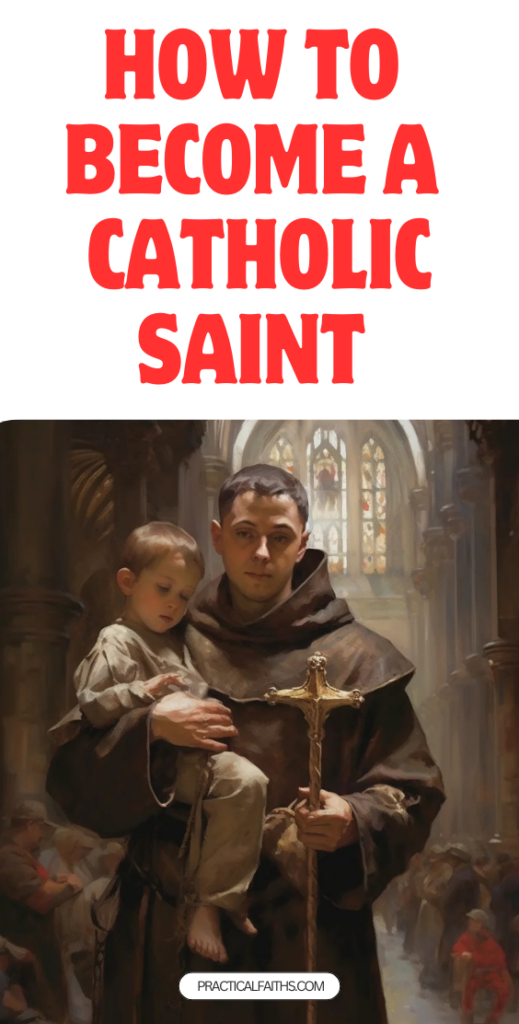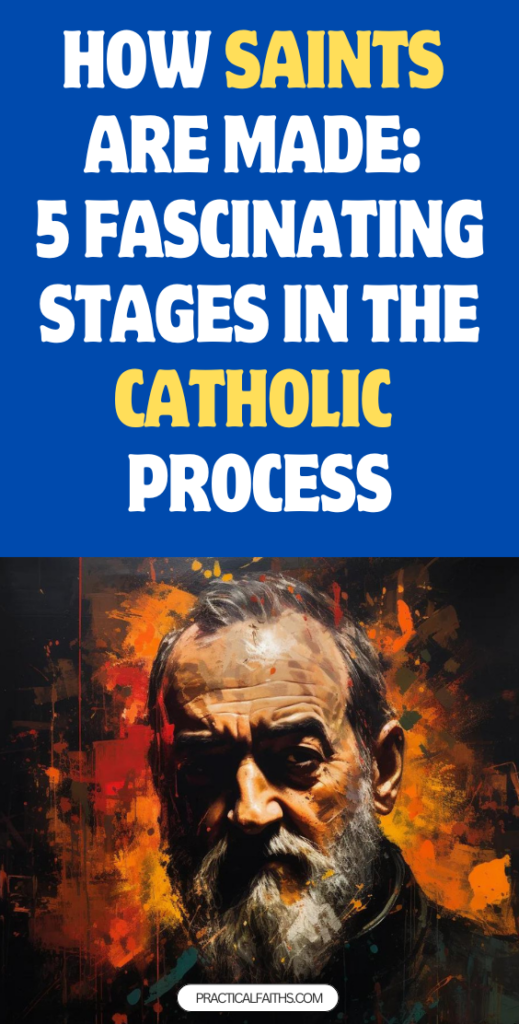The Catholic Church reveres saints as extraordinary models of holiness, humility, and dedication to God. But the journey to officially becoming a saint is not simple or quick—it is a rigorous, detailed, and sometimes lengthy process.
Becoming a saint, or “canonization,” involves multiple steps, careful examination of a candidate’s life, and, in most cases, even miracles.
This article explains each step of the process and the values the Church upholds by honouring these holy individuals.
1. The Path Begins: Servant of God

The path to sainthood begins only after a candidate has passed away. The process cannot begin until at least five years after a person’s death, although this period can be waived by the Pope. This initial wait allows for perspective, ensuring the individual’s virtues are enduring and not just a product of current popularity or trends.
Once this time has passed, and with evidence of the candidate’s virtue and devotion to God, a bishop (usually from the candidate’s home diocese) can open an investigation into the candidate’s life. The candidate then receives the title “Servant of God,” and a formal examination begins, typically involving interviews, testimonies, and a study of the candidate’s writings, actions, and spiritual contributions. If evidence suggests that the individual led an exceptionally holy life, the bishop sends their findings to the Vatican’s Congregation for the Causes of Saints.

2. Moving Forward: Venerable

Once the Congregation for the Causes of Saints has thoroughly reviewed the candidate’s life, they make a judgment based on whether the individual practiced “heroic virtue.”
Heroic virtue means consistently embodying the virtues of faith, hope, charity, prudence, justice, fortitude, and temperance to an extraordinary degree. If the candidate meets these standards, they are declared “Venerable.” At this stage, the Church formally acknowledges that the person lived a life of profound virtue and is worthy of admiration and emulation.
Being declared Venerable, however, is not yet an official declaration of sainthood. It’s more of a recognition that the individual’s life was indeed virtuous and godly. To move forward, a miracle must be attributed to the intercession of the candidate after their death.

3. The First Miracle: Beatification and Becoming “Blessed”

To advance from Venerable to Blessed, one verified miracle, typically a medically inexplicable healing, must be attributed to the candidate’s intercession. This miracle must be confirmed as scientifically unexplainable, enduring, and complete. A board of medical experts, theologians, and then the Pope must review and validate this miracle. This ensures that the healing is not just a coincidence but a clear act of divine intervention through the candidate’s prayers on behalf of the faithful.
Once this miracle is confirmed, the candidate is “beatified” and given the title “Blessed.” This is a significant step because beatification permits the candidate’s public veneration in specific regions or religious communities, typically where the candidate lived or ministered. However, this veneration is still regional rather than universal.
Notably, martyrs—those who died for their faith—do not require a miracle to be beatified. Their willingness to sacrifice their life for God is seen as a powerful testament to their faith, and they may be beatified based on their martyrdom alone.

4. The Second Miracle: Canonization and Becoming a Saint

The final step to sainthood is canonization, which requires a second miracle to be attributed to the candidate’s intercession. Like the first, this miracle must undergo thorough investigation and verification. If approved, the Pope can officially declare the candidate a saint.
Once canonized, the individual is universally recognized as a saint in the Catholic Church and can be publicly venerated and called upon for intercession by Catholics worldwide. Saints receive a feast day, which may be celebrated universally or in particular regions or communities. At this stage, the Church acknowledges that the saint is in Heaven, able to intercede for those on Earth, and worthy of veneration.
Understanding Miracles in the Canonization Process
The requirement for miracles is based on the belief that saints, being in close communion with God, can intercede on behalf of those who ask for their prayers. Miracles are seen as signs of divine approval and evidence that the candidate truly is in Heaven, close to God.
Miracles, often medical in nature, must be unexplainable by science, immediate, and lasting to qualify. Some notable miracles associated with saints include unexplained healings of severe illness, recoveries from near-fatal injuries, and even the raising of the dead in rare cases.
Why the Process is So Rigorous

The Church’s rigorous path to sainthood serves several purposes:
- Protecting Authenticity: The Church seeks to ensure that only genuinely holy individuals are honoured with sainthood. The process weeds out those who may have been popular but not necessarily pious or virtuous.
- Encouraging Faithful Living: The thorough examination of a candidate’s life encourages the faithful to pursue lives of holiness, knowing that true dedication to God is respected and revered by the Church.
- Strengthening Faith: Miracles offer tangible evidence of God’s presence and power. Verified miracles in the canonization process remind the faithful of God’s continual intervention in the world and the efficacy of intercessory prayer.
Canonization Today: Contemporary Saints
Pope John Paul II and Pope Francis have canonized a significant number of saints, with the canonization process being streamlined in recent years, especially for well-known candidates. Some more recent saints include St. Mother Teresa of Calcutta, known for her work among the poor and sick, and St. Oscar Romero, who was martyred for defending human rights.
Saints as Beacons of Faith

The Catholic Church’s canonization process is a testament to its respect for authenticity, virtue, and divine intervention. While long and complex, this journey ensures that only those who lived lives of true devotion and service are honored as saints.
Saints serve as beacons of faith, courage, and humility, inspiring Catholics to seek holiness in their own lives. By honoring saints, the Church not only recognizes their dedication to God but also provides the faithful with spiritual role models, reminding them that every path to holiness is unique and that each of us, in our journey of faith, has the potential for extraordinary grace.





